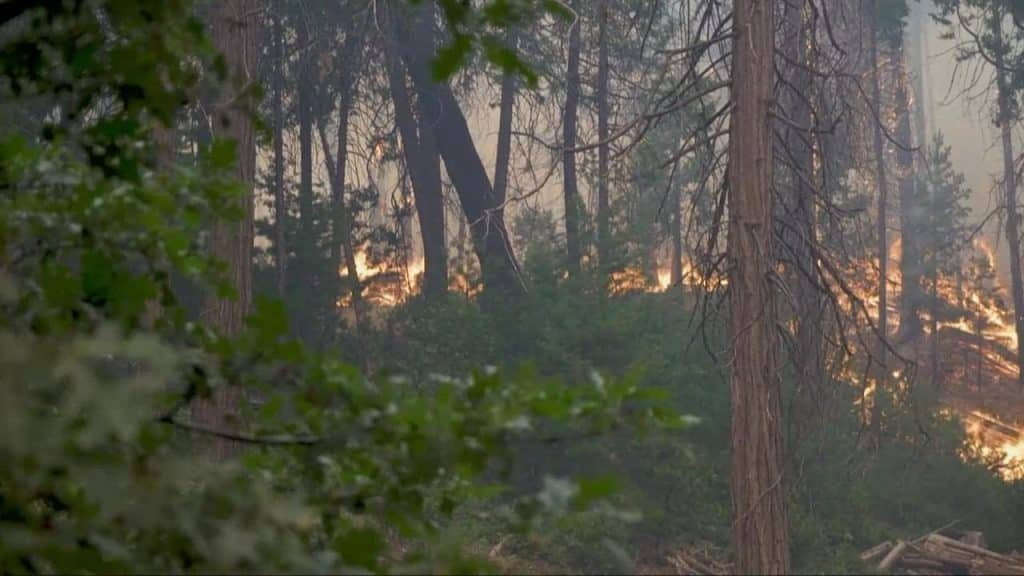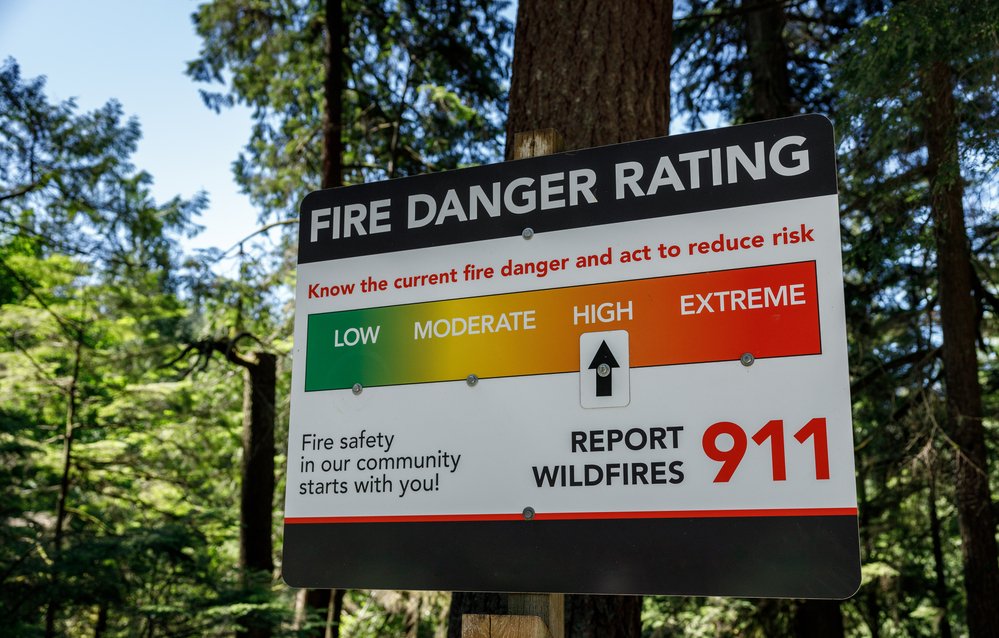Many species of trees and plants have been around for over 350 million years. That’s a long time, and during that span, they’ve developed some amazing defenses. Some of these defenses even include protection against wildfires.
Over the past few years, wildfires have dominated the news as their destruction can quickly move over huge areas. When conditions are right, there is little to slow down the flames. A big part of that is the type of vegetation in the area.
This means that homeowners looking to protect their property should look to trees and large plants that are the most resistant to fire.
In this list, we’ll go over the top fire-resistance trees and large plants that you can plant to create a barrier for your property against certain wildfire conditions.
The Goal Of Using Fire-Resistant Trees
The point of using fire-resistant landscaping and trees isn’t just so they don’t burn. The ultimate goal is to provide a defensible space around your property. This is usually defined as approximately a 200-foot perimeter around your property structures or house that is resistant to fire.
What Makes a Tree or Shrub Fire-Resistant
Fire-resistant trees generally share one or more of the following criteria. The more of these a tree possesses, the more fire-resistant it generally is.
- Deciduous – Meaning they shed their leaves annually
- High moisture content in the bark and leaves. Leaves should be supple
- Large leaf area
- Low in wax, resin, and oil content
- Watery sap
- Low or no odor from the sap
- Open growth, no dense branches
- Heavy bark that doesn’t fall or peel from the tree
Of course, none of these attributes can make a tree fireproof. But these features add considerable fire resistance and can slow the progress of the fire or even causes it to go around the property if enough of a defensive area is set up.
Best Fire Resistant Trees
Remember, when planting these trees, you don’t want them too close to the house, instead they should act like a barrier. You also want to keep them pruned to just above the roof line to prevent any possible fire from spreading from the trees to the house.
Ponderosa Pine
This tree has long, water-filled green needles along with a very tough bark that can resist passing fire damage. These can grow to a height of around 60 feet and are a great choice as a fire barrier.
Common Hackberry
The Common Hackberry has bark that is more like cork, providing great fire resistance. It’s also a nice shade tree with generous light-colored leaves. These grow to approximately 40 feet in height.
Crabapple
You can get many different varieties of Crabapple trees but they are all fire-resistant. The differences are in whether they produce no fruit or just ornamental fruit. Different varieties also produce different colored flowers in the spring. The overall height for these trees is about 20 feet.
American Mountain Ash
This tree has lush green leaves that can grow up to a foot long each. The leaves also transition from an orange into a beautiful red color before falling in the winter. In the spring, they produce white flowers. They grow to a height of about 30 feet.
Pin Oak and Red Oak
These two species grow very quickly compared to other trees on this list. They also can provide great shade with a nice canopy when fully grown. Pin Oak or Red Oak can grow to about 70 feet, so a very tall tree.
Rocky Mountain Maple
Well known for dropping helicopter seeds in the fall, this smaller tree grows to about 15 feet. It has dark green foliage with high water content—a great pick if you want a smaller tree but something taller than a shrub.
Western Catalpa
A 50-foot deciduous tree with healthy green leaves and small flowers that resemble orchids. The flowers turn to seed pods over the course of the season.
Beech Tree
This tree produces edible Beech nuts in the fall. It features dark green leaves with a shiny, glossy texture due to the high water content. Beech trees grow slowly but they do require low amounts of water. They can grow to about 60 feet but may be higher in some cases.
It’s important to note that some of these trees do better in different environments and climates, so try to match them with your area.
Best Fire Resistant Shrubs
Shrubs can provide a strong firebreak around your property. They should be placed with approximately two times their height between them. You also want at least 3x their height between the top of the shrub and any tree that hangs over them.
Flowering Currant
You can find some varieties of Currants that produce edible fruit. They have dark green leaves and produce attractive pink flowers which have a pleasant fragrance. The height for these varieties is about 4 feet.
Oregon Boxwood
This shrub has leather-like green leaves and is relatively short compared to other shrubs. It can grow up to 4 feet but is generally kept shorter
Carol Mackie Daphne
In the spring this shrub produces very nice pink flowers with a great fragrance. Relatively easy to maintain as well and grows to about 4 feet but can be kept shorter.
Lilac
Best known for its amazing fragrance that is hard to miss, this deciduous shrub can grow up to 15 feet, so it’s taller than most shrubs on this list. Its spring flowers can vary between white, pink, and purple, giving it a style to match its well-known fragrance.
Sumac
A Sumac has green leafy foliage that turns into many different shades of red, orange, and even purple in the fall, making this a dazzling shrub if color is also what you want in a protective plant. In the spring you get small yellow flowers that slowly change to fuzz-covered fruit. These shrubs can grow up to 20 feet, but other variants can be much shorter.
Vine Maple
Growing up to about 15 feet in height, this deciduous shrub also has a nice color change in the fall, similar to the Sumac shrub.
Willow
If you’re looking for a shrub to take hold and grow fast, the Willow is a great choice. They turn a nice yellow color from their in-season green during the fall. One thing though is these don’t work well with home landscaping due to their root structure. So these are best for far-away placement from the home or on a property without a home or landscaping.
More Tips On Fire Resistant Trees And Shrubs

Besides just the right type of tree or shrub or tree, you also have to be careful with placement. You don’t want the fire to easily spread from one tree or shrub to another, or worse yet, to your home or other structure.
Shrubs should be placed apart at a distance of twice their height. So a 5-foot shrub should be placed 10 feet from the next shrub.
For trees, the distance should be 10 feet apart and no part of the tree should be less than 10 feet from the home or any structure on the property.
Tree branches should be kept to no less than 6 feet from the ground, the higher the better. If branches are hanging over any shrubs, there should be 3x the height of the shrub as clearance to the closest branch.
Using these guidelines for placement and choosing the right trees and shrubs from this list, you should be able to create a good defensible area around your home or property. A well-watered lawn and flowerbeds can also provide a nice fuel break to further slow down a fire and help to save your property if a wildfire breaks out near you.
Finally, be cautious of using bark mulch as it can catch fire easily in dry conditions. Avoid using it for landscaping within 5 feet of your house.

